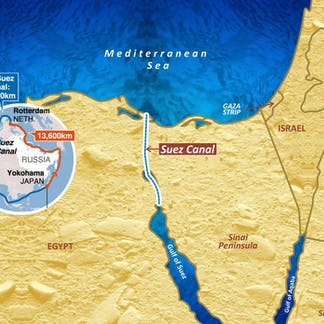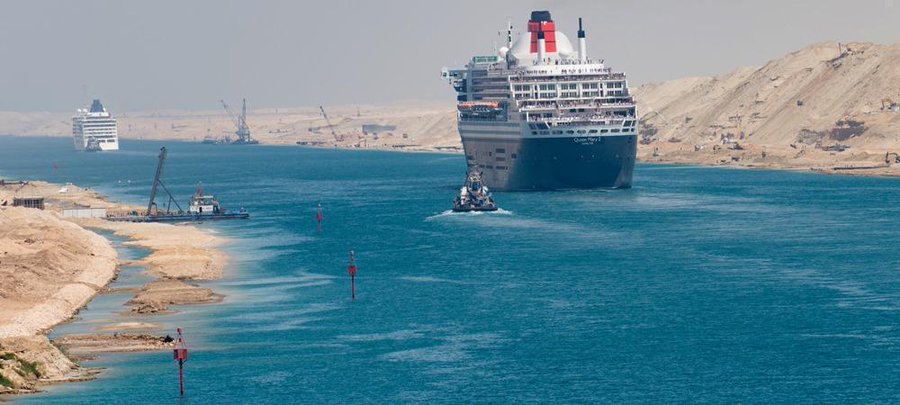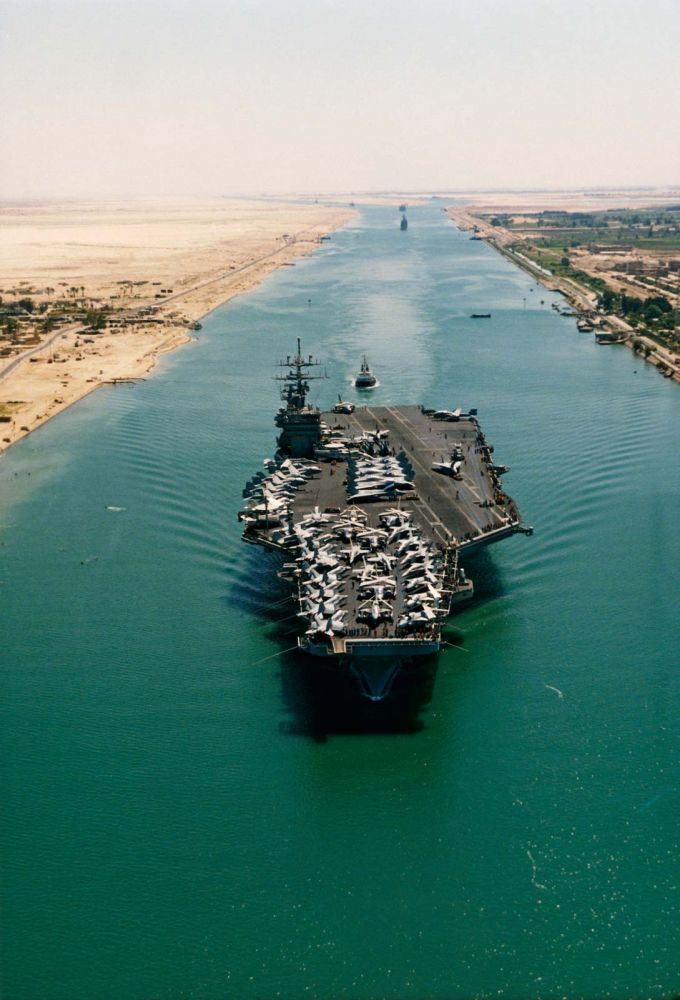The long convoy of buses and vans finally stirred into motion. It was some more time yet before it came our turn to merge into the procession and start the trip through Port Said toward Cairo and the pyramids.

(Pic from the internet)
The highway we were traveling on traversed on the eastern edge of the Nile Delta. The surrounding terrain reminded me of the time when we visited Fort Lauderdale, where I stood in awe at the vast and totally flat southern Florida coastal plain, uninterrupted for miles and endless miles, stretching in all directions to the horizon. Unlike the Florida plain, though, the land here was heavily cultivated. Farming communities, all cowering around their own mosques with towering minarets, dotted the right hand side of the highway. A mysterious grayish wall could be seen stretching endlessly along, and keeping a good distance from, the highway on the left side. We drove for the most part on the highway, which was of okay quality at first, but gradually deteriorated to a somewhat rundown condition as we got closer to Cairo's much heavier traffic. Occasionally, our van veered onto local roads, either for shortcuts or to circumvent pay stations.

(Pic from the internet)
It became immediately clear that Mo'men was a well trained tour guide. No sooner had the van started moving than he launched into a nonstop offering of facts and explanations about Egypt in general and about what our van was passing by at any given moment. His narration kept us from nodding off during a few boring stretches of the trip. Of all the information he generously doled out to us, I found most interesting the part about the Suez Canal, which ran side-by-side with our road for the first one-third of our journey.

(Pic from the internet)
Suez and Port Said are both coastal towns in Egypt; Suez is on the Red Sea, Port Said overlooks the Mediterranean. While the distance on land between the two is only about 150 km, to travel from one to the other by sea, without the benefit of the canal, one would have to skirt the entire African continent. The first waterway linking the Red Sea to the Mediterranean was created by ancient Egyptians around 2,000 B.C., who dug a canal connecting the Red Sea with the Nile which enters into the Mediterranean. The canal allowed the passage of light sail boats, either pulled along by horses or camels or rowed. Though poorly constructed by today's standards, it was kept in use for more than a thousand years before it dried out and was silted up by the sand constantly swept around by the great desert winds.
A new canal was contemplated in the 18th century, but the idea was nipped in the bud because there was thought to be a 30-foot difference between the levels of the Red and Mediterranean Seas, which would require the construction of large and costly locks.

(Pic from the internet)
Interest in a waterway was rekindled in the 19th century by some Frenchmen. Chief among them was Linant de Bellefonds, who had become chief engineer of Egypt's Public Works. He and Mougel, a hydraulics engineer, surveyed the Isthmus of Suez and planned out a direct line from Suez to Peluse, crossing Lake Timsah and the Bitter Lakes, totaling 147Km in length. For his part, Bourdaloue established that the difference in levels between the two seas was so small as to be negligible.

(Pic from the internet)
A French diplomat and engineer, Ferdinand de Lesseps, then convinced the Egyptian viceroy Said Pasha to support the building of a canal. In 1858, the Universal Suez Ship Canal Company was formed and given the right to begin construction of the canal and operate it for 99 years. Construction of the Suez Canal officially began on April 25, 1859. It opened ten years later on November 17, 1869 at a cost of $100 million. Some sources estimate that over 30,000 people were working on the canal at any given period, that altogether more than 1.5 million people from various countries were employed, and that thousands of laborers died on the project. Forced labor of Egyptian workers was even used for a period of time, and this practice of slavery was stopped only due to British objection. One should not be so quick to interpret the British opposition as purely based on humanitarian concerns, though. Throughout the nineteenth century and into the twentieth, Britain was in competition, and frequently in conflict, with France in the eastern Mediterranean. The British feared the alterations in the status quo that the Canal apparently would bring. They specifically feared that a canal open to everyone might interfere with its India trade and, therefore, preferred, and eventually built, a connection by train from Alexandria via Cairo to Suez. In truth, the British could not be blamed for being paranoid; Napoleon, after all, had conquered Egypt for exactly that purpose: to undermine Britain's access to its trade interests in India and to establish a French presence in the Middle East, with the ultimate dream of linking with a Muslim enemy of the British in India.

(Pic from the internet)




